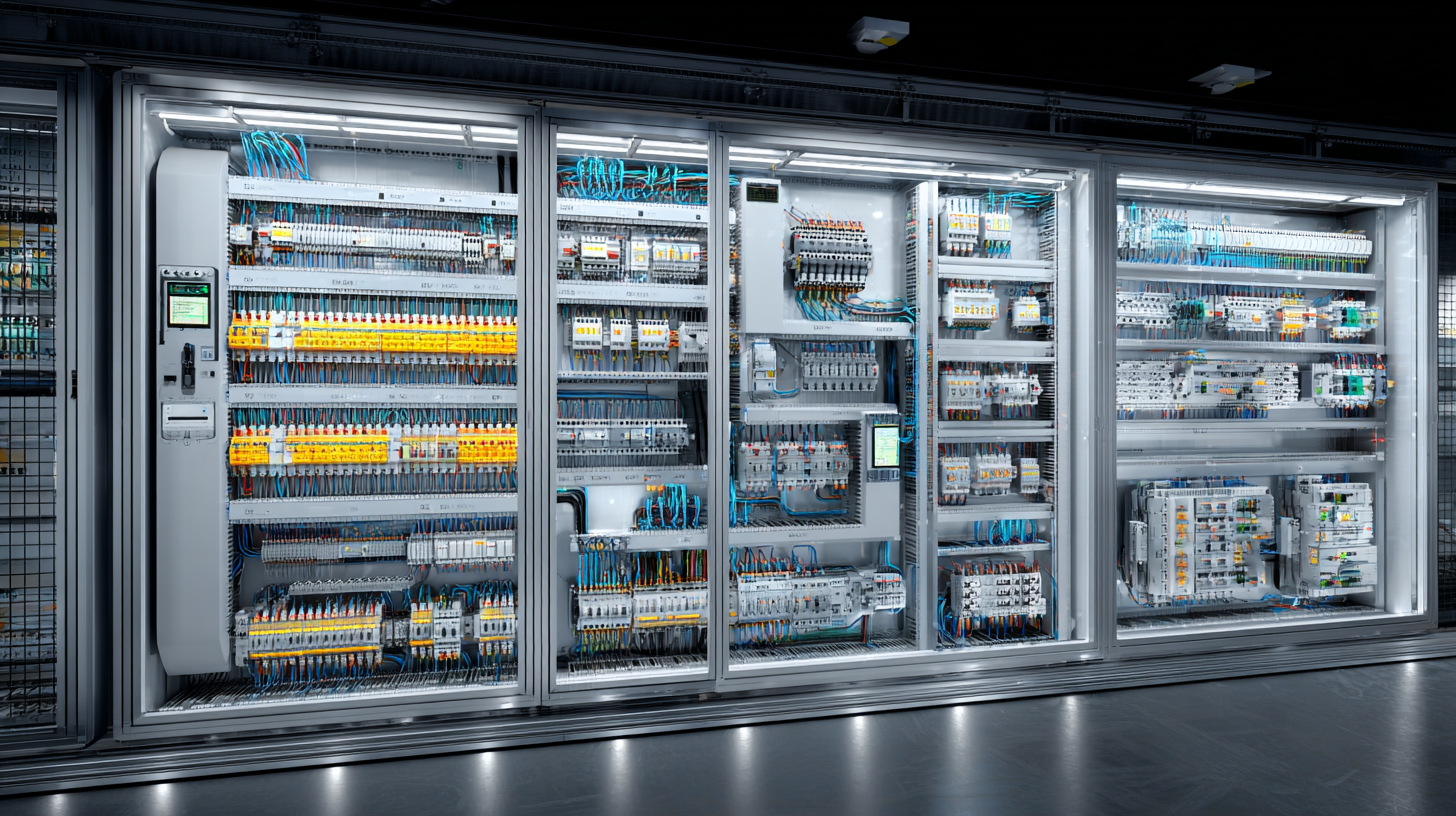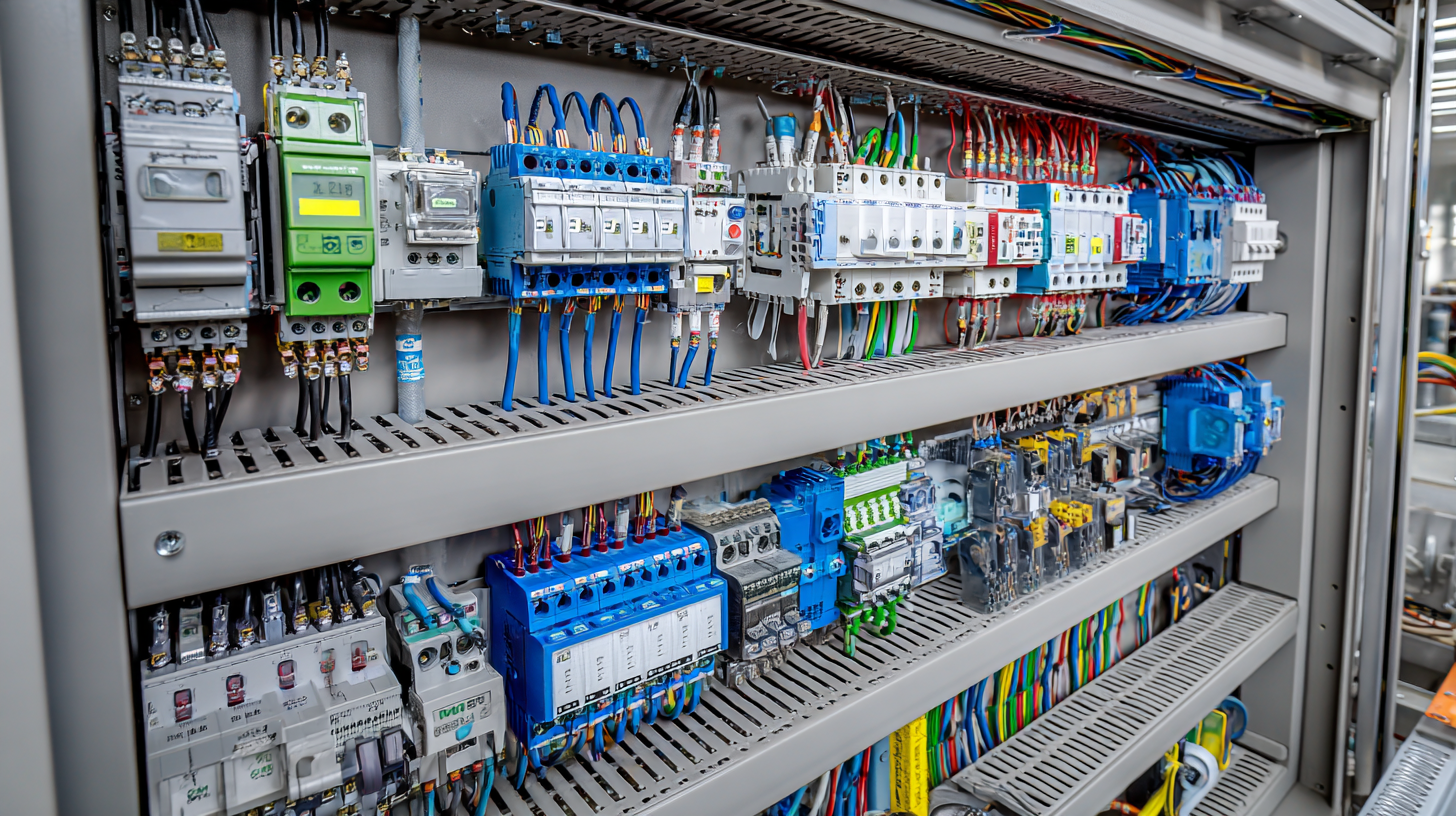In today's rapidly evolving manufacturing landscape, PLC automation has emerged as a cornerstone for enhancing operational efficiency and productivity. According to a report by MarketsandMarkets, the global PLC market is projected to reach USD 10.36 billion by 2025, driven by the demand for advanced automation solutions across various industries. This surge highlights the critical need for organizations to adopt best practices in PLC automation to remain competitive. Industries ranging from automotive to food and beverage are increasingly leveraging PLC solutions to optimize processes and reduce downtime. With digital transformation reshaping operational protocols, understanding industry-specific applications of PLC automation becomes essential. This blog explores compelling case studies that demonstrate the effectiveness of PLC automation solutions and presents data-driven insights into why embracing these innovations is vital for success in a technology-driven market.

In the rapidly evolving landscape of industrial automation, Programmable Logic Controllers (PLCs) have emerged as a cornerstone for modern manufacturing processes. As industries strive for increased efficiency and flexibility, the market trends in PLC automation solutions showcase a comparative analysis of the various technologies influencing this sector. One significant trend is the shift towards cloud-based PLC systems, which offer real-time data access and improved scalability. Companies are increasingly adopting these systems to leverage the Internet of Things (IoT), allowing for smarter operations and enhanced decision-making capabilities.
Moreover, the integration of advanced machine learning algorithms into PLC systems is revolutionizing predictive maintenance and operational performance. This trend is particularly prominent in industries such as automotive and pharmaceuticals, where precision and reliability are paramount. By employing predictive analytics, organizations can minimize downtime and optimize resources, thus driving operational excellence. The comparative analysis of these market trends reveals that businesses are not just focused on traditional automation solutions, but are actively seeking innovative technologies to stay competitive in a global marketplace.
| Region | Market Share (%) | Growth Rate (CAGR %) | Key Industries | Technology Adoption |
|---|---|---|---|---|
| North America | 34% | 6.4% | Manufacturing, Oil & Gas | High |
| Europe | 29% | 5.5% | Automotive, Pharmaceuticals | Medium |
| Asia-Pacific | 25% | 8.2% | Electronics, Food & Beverage | Growing |
| Latin America | 8% | 4.8% | Mining, Agriculture | Low |
| Middle East and Africa | 4% | 5.1% | Construction, Water Management | Emerging |
When evaluating the best PLC automation solutions, it’s crucial to adopt a data-driven approach to identify key features that distinguish leading options in the industry. A high-performance PLC solution ensures adaptability, seamlessly integrating with diverse industrial protocols and existing technology. This flexibility allows businesses to optimize their operations and maintain a competitive edge in the rapidly evolving industrial landscape.
Moreover, an effective PLC solution prioritizes user-friendly interfaces that enhance operator efficiency while minimizing training time. Real-time monitoring capabilities are essential for troubleshooting and predictive maintenance, significantly reducing downtime and associated costs. Additionally, advanced data analytics features empower organizations to extract actionable insights from operational data, driving continual improvement and innovation. By focusing on these key attributes, companies can confidently select PLC solutions that not only meet their immediate automation needs but also support long-term growth and adaptability.
 When evaluating PLC (Programmable Logic Controller) automation platforms, a thorough cost-benefit analysis is essential for making informed decisions that align with business objectives. Various platforms offer different features, scalability, and integration capabilities, each influencing the overall return on investment (ROI). A detailed examination of upfront costs versus long-term operational savings can reveal the true value of each solution. For instance, some platforms may require higher initial investments but provide advanced functionalities that streamline processes and reduce labor costs over time.
When evaluating PLC (Programmable Logic Controller) automation platforms, a thorough cost-benefit analysis is essential for making informed decisions that align with business objectives. Various platforms offer different features, scalability, and integration capabilities, each influencing the overall return on investment (ROI). A detailed examination of upfront costs versus long-term operational savings can reveal the true value of each solution. For instance, some platforms may require higher initial investments but provide advanced functionalities that streamline processes and reduce labor costs over time.
Moreover, considering factors such as ease of use, support, and maintenance costs can significantly impact the overall financial outlook. A user-friendly platform that minimizes training requirements can lead to faster adoption and higher employee productivity, compensating for higher license fees. Additionally, platforms that facilitate quick and seamless upgrades can enhance longevity and adaptability, further improving their cost-effectiveness. By conducting a meticulous cost-benefit analysis, organizations can identify the most suitable PLC automation solutions that not only meet their immediate needs but also support future growth and innovation.
In today's rapidly evolving industrial landscape, the evaluation of Programmable Logic Controller (PLC) solutions hinges significantly on performance metrics informed by global industry standards. Effective PLC automation solutions must encompass responsiveness, reliability, and scalability to meet the diverse demands of modern manufacturing environments. Organizations need to assess these solutions not just on their initial functionalities but also on how well they integrate with existing systems, adapt to changes in production processes, and support future advancements.
To evaluate PLC solutions accurately, companies should consider key metrics such as processing speed, input/output capabilities, and ease of programming. The ability to monitor and collect data in real-time is another vital performance marker, as it directly influences operational efficiency and decision-making. Furthermore, the overall lifecycle cost, including maintenance and support, plays a critical role in determining a solution's value. By aligning PLC evaluation processes with established industry standards, businesses can ensure that their automation strategy not only enhances productivity but also fosters innovation and sustainability in their operations.
In an era where technological advancements are reshaping industries, the role of PLC automation has never been more crucial. As logistics, manufacturing, and robotics evolve, companies are exploring how programmable logic controllers (PLCs) can future-proof operations amid shifting demographics and the increasing demand for efficiency. With automation integrating AI-driven applications and collaborative robotics, industries are experiencing a seismic shift toward enhanced productivity and reduced operational costs.

The complexities of modern manufacturing and logistics require robust automation solutions that can adapt to ever-changing market conditions. With the convergence of digital technologies and improved connectivity, PLC automation facilitates a seamless flow of information across systems, enhancing plant efficiency and decision-making processes. Industries must embrace these advancements to meet growing regulatory demands and evolving customer expectations, ensuring they remain competitive in a rapidly changing landscape. This transformative approach not only prepares businesses for current challenges but also positions them advantageously for future innovations.
